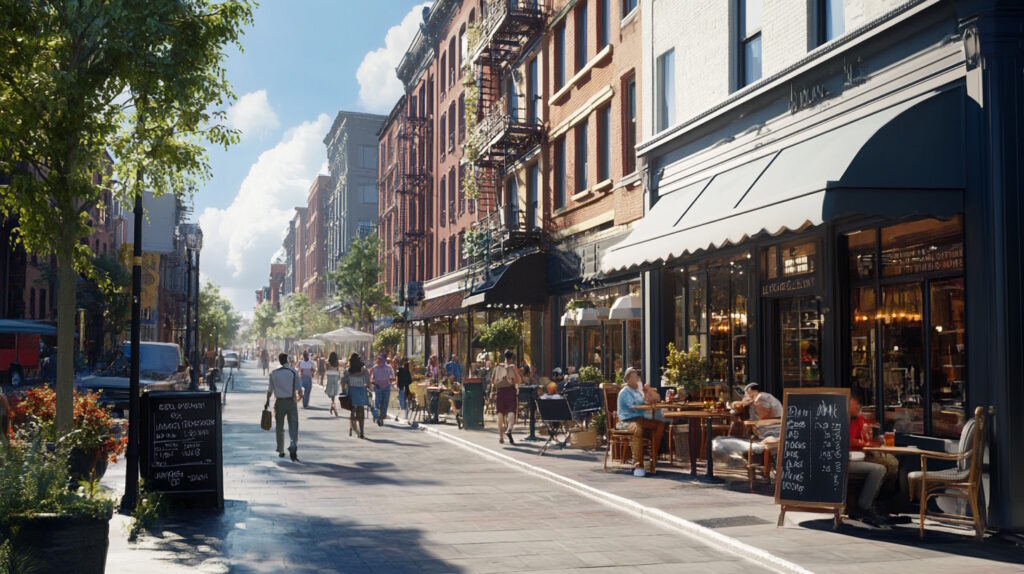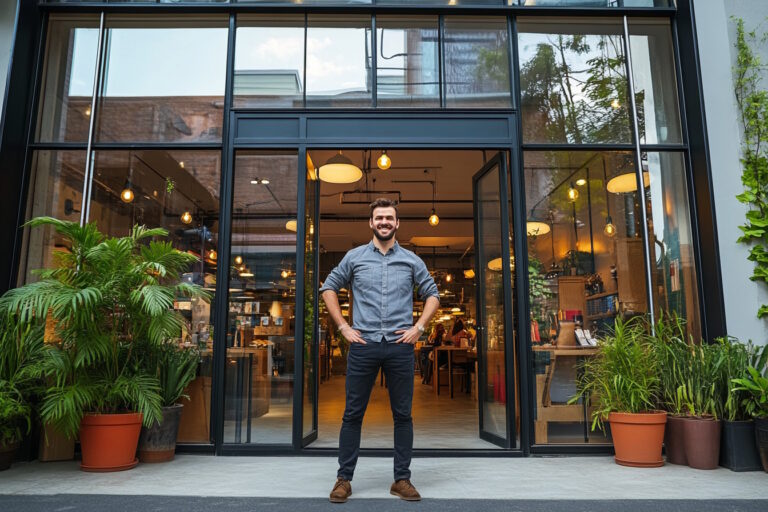Article Insights
Are you a restaurant owner looking to navigate the complexities of commercial real estate? This article explores how to position your establishment for success by focusing on key areas:
– 💡 Discover key commercial real estate options for restaurant owners that can influence your restaurant’s profitability and customer reach.
– 💡 Understand the nuances of various restaurant leasing options that can align with your financial goals and operational needs.
– 💡 Learn about diverse restaurant financing solutions to support your business’s growth and stability in a competitive market.
– 💡 Equip yourself with knowledge and strategies to make informed decisions about your restaurant’s future and its place in the industry.
Unlocking New Opportunities: Commercial Real Estate Options for Restaurant Owners
In the ever-evolving restaurant industry, making informed decisions about commercial real estate options for restaurant owners is more crucial than ever.
Selecting the right location and property type can substantially boost your establishment’s visibility and customer engagement, smoothing the way for sustained growth.
In a landscape filled with challenges and opportunities, mastering the intricacies of commercial property and financing can enhance your restaurant’s long-term viability.
Prime locations are more than just geographic coordinates; they represent a strategic investment that can maximize foot traffic and enhance your brand.
Selecting the optimal real estate affects your business’s overall health, influencing everything from operational costs to customer experience.
To thrive, restaurant owners need to navigate the dynamic field of commercial property with expertise, balancing location benefits against long-term viability and cost implications. (Internal link: Should You Lease or Buy Your Business Space)
Understanding the Importance of Commercial Real Estate
Opting for the right commercial real estate is like choosing the most fertile soil for your garden—you set the groundwork for thriving. A strategic approach toward real estate can profoundly affect your restaurant’s success.
The location of your restaurant is pivotal, drawing in local demographics and ensuring high visibility to potential patrons. Moreover, it plays a crucial role in supporting the business viability, especially when aligned with customer behaviors and expectations.
Understanding the multifaceted influence of commercial properties goes beyond aesthetics; it involves an in-depth comprehension of cost implications. Owners who harness strategic real estate options not only benefit from enhanced visibility but also better control operational costs, translating into significant savings and improved margins.
Commercial Real Estate Options for Restaurant Owners
Navigating the diverse landscape of commercial real estate, restaurant owners can choose from a range of options—each presenting unique benefits and challenges.
Deciding on the right type of space requires more than just a glance at square footage; it involves understanding the operational dynamics that each type offers.
Standalone buildings provide independence and flexibility, often becoming landmarks for devoted customer bases. Mixed-use developments, often bustling with residential and retail synergy, attract a cross-section of the community.
On the other hand, shopping centers offer a built-in customer base, cutting down on marketing efforts required for foot traffic. Even innovative spaces like food halls and pop-up locations can serve as strategic trial grounds without committing to a long-term lease, allowing restaurant proprietors to test new concepts and adapt in real time.
Evaluating Location and Space Requirements
Choosing the ideal commercial space involves a careful evaluation of location and specific space requirements to ensure both immediate and long-term success.
Aligning your establishment with target demographics can ensure the location resonates with your brand ethos while supporting a burgeoning customer base. A thoughtful consideration of space layouts to accommodate kitchen, dining, and operational needs ensures functionality from day one.
Additionally, the pivotal decision of whether to rent or buy should be informed by both current financial standing and future growth projections. Weighing the rent vs. buy considerations can not only provide peace of mind but can be a determinant of how easily your restaurant can pivot in response to industry changes. (Internal link: CRE Financing vs Leasing: Which Is Better)
Navigating Restaurant Leasing Options
The right lease can be as powerful as the right location, providing financial flexibility and setting the tone for future negotiations.
However, understanding restaurant leasing options is paramount to creating advantageous contracts that can control costs and reduce financial strain.
Different lease types—gross, net, and percentage—come with their unique implications for overheads and monthly expenditures. For instance, the simplicity of a gross lease offers predictability in expenses, while various net leases provide a tiered structure of costs, potentially affecting profit margins.
A percentage lease, aligning rent payments with actual sales, can be beneficial but requires a keen understanding of sales projections and seasonal variations.
Exploring Restaurant Financing Solutions
In the world of restaurant ownership, securing financing is not just about capital—it’s about fueling your vision and ensuring stability. Understanding the array of restaurant financing solutions allows owners to select options that align with their business models and growth aspirations.
Traditional bank loans, while competitive in their interest rates, often require a solid credit history and collateral. SBA loans offer a lifeline to restaurants, backed by government assurance but demand understanding of terms and eligibility.
Meanwhile, alternative lending has risen as a rapid, albeit more costly, source of funds. The novel approach of crowdfunding offers engagement with potential customers even before opening your doors, adding a layer of community support and interest. (Internal link: The Difference Between SBA 7(a) and CRE Loans)
A Blueprint for Success in the Restaurant Industry
Strategically addressing commercial real estate solutions and financing opportunities doesn’t just set your restaurant in motion—it propels it towards sustained success.
By comprehending diverse property types, lease agreements, and financing methods, restaurant owners can powerfully position themselves to capture and captivate their markets.
Success in the restaurant sector begins with securing a strategic location that blends seamlessly with brand identity and target market needs. Tailored lease negotiations can provide critical adaptability, allowing business pivots without unnecessary constraints.
This adaptability is further enhanced by a thorough exploration of financial avenues, ensuring the business remains well-capitalized for both everyday operations and future growth.
To learn more about how commercial real estate loans can provide a sturdy financial foundation for your restaurant’s success, explore our comprehensive Commercial Real Estate Loan Program.








